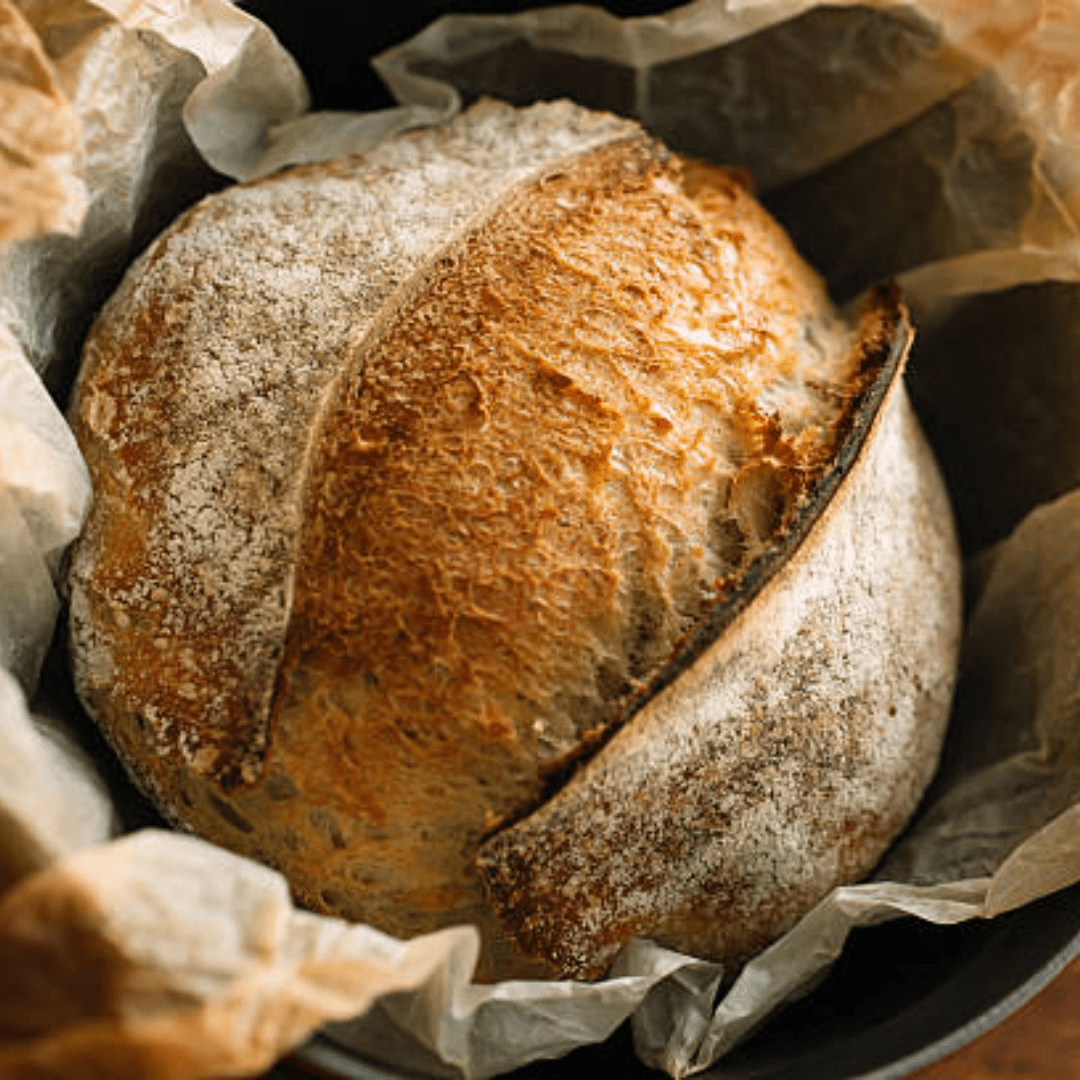
Sourdough Bread Baking Recipe
What sets sourdough apart is its unique fermentation process. Instead of relying on commercial yeast, sourdough uses wild yeast and bacteria present in the flour and air to rise naturally over an extended period of time. This slow fermentation gives the bread its distinct tangy flavor and chewy texture. But the benefits don't stop there - this ancient method also enhances digestibility and nutrient availability by breaking down gluten and phytic acid. So as you bite into a slice of sourdough, you can savor all those complex flavors knowing that this loaf has stood the test of time with its old-school magic.
Equipment
- 1 large mixing bowl
- 1 Dutch oven.
- 1 Razor blade for scoring.
Ingredients
- 3 ½ cups all-purpose flour (475 grams).
- 2 tsp salt (10 g).
- ½ cup active sourdough starter (100 grams)
- 1 ⅓ cups warm water (325 grams).
Instructions
Day 1
- Morning: Take your sourdough starter out of the fridge. Discard about half of it and feed it with equal parts of flour and water (e.g., 1:1 ratio). Let it sit at room temperature for 4-8 hours until it becomes active and bubbly.
Day 2
- Morning: In a separate container, mix a portion of your active sourdough starter (about 1/4 cup) with equal parts of flour and water. Allow it to ferment at room temperature for 4-6 hours, or until it doubles in size.
- Afternoon/Evening: In a large mixing bowl, combine the levain with the remaining ingredients for the recipe: flour, water, and salt. Mix until a shaggy dough forms. Let it rest for 30 minutes.
- Fold and Stretch: Perform a series of folds and stretches every 30 minutes for the first 2-3 hours. This helps develop gluten and strengthen the dough.
- Bulk Fermentation: Allow the dough to bulk ferment for 3-6 hours, or until it has visibly risen and has a slightly aerated texture. Perform additional folds if needed.
- Evening: Once the bulk fermentation is complete, lightly flour your work surface. Turn the dough out, shape it into a round, and let it rest for 20-30 minutes.
- Final Shaping: Shape the dough into its final form, like a boule or batard.
Days 2&3
- Evening/Night: Place the shaped dough in a proofing basket or bowl lined with a floured cloth. Cover it and transfer it to the refrigerator for an overnight cold proof. This step enhances flavor and texture and provides a nice oven spring.
Day3
- Morning: Preheat your oven and a Dutch oven at a high temperature (around 450°F/230°C).
- Transfer: Carefully transfer the cold proofed dough into the preheated Dutch oven. Score the top with a sharp knife.
- Bake with Lid: Cover and bake for 20-30 minutes to create steam and help the dough spring.
- Bake without Lid: Remove the lid and continue baking for an additional 20-30 minutes or until the crust is golden brown.
- Cooling: Allow the bread to cool on a wire rack for at least an hour before slicing.